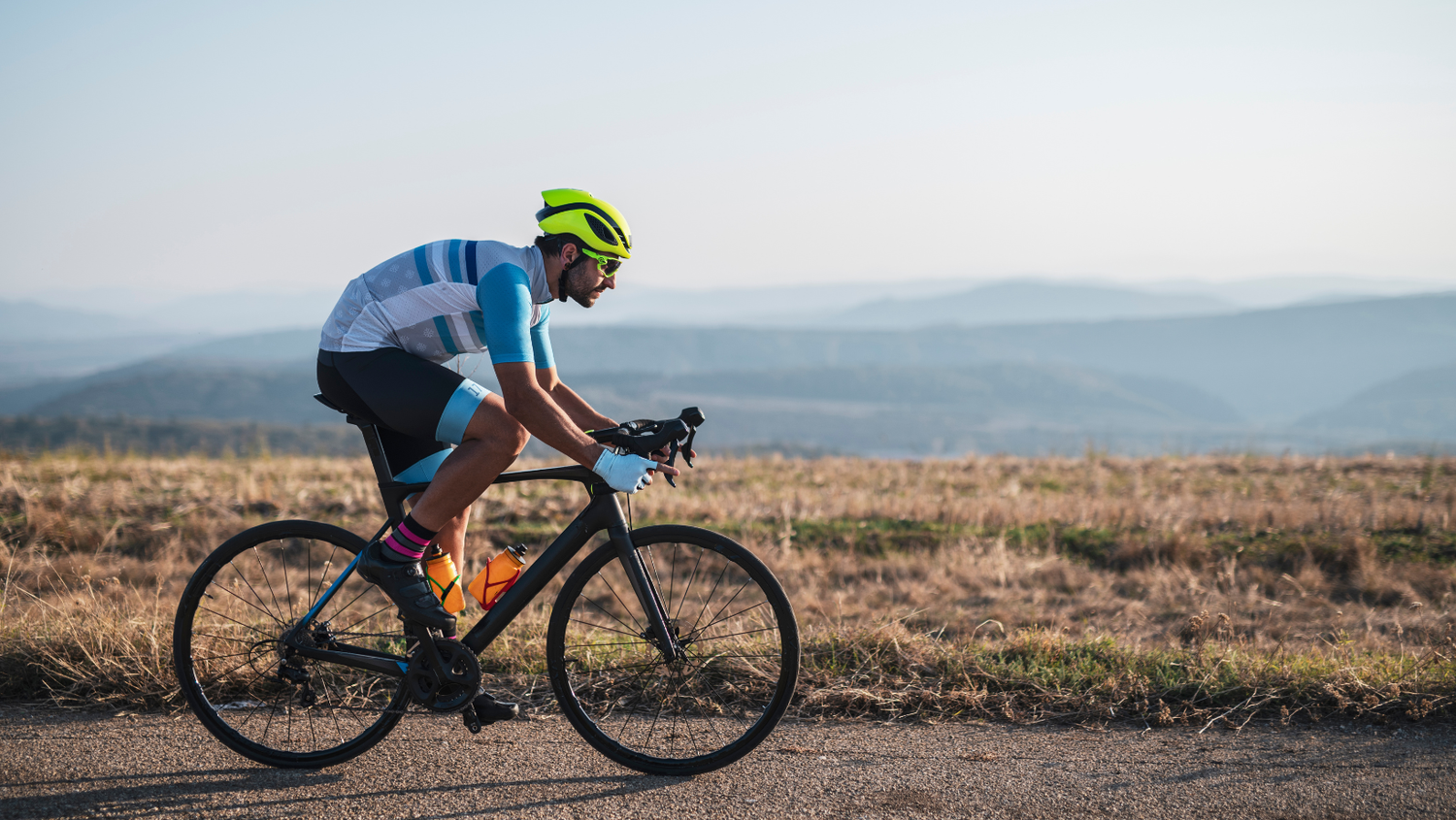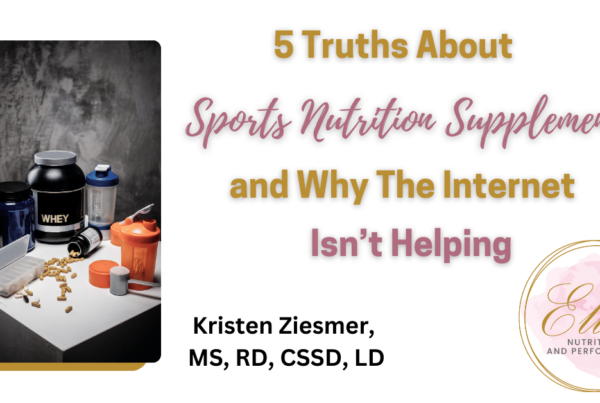A healthy lifestyle that prioritizes nutrition and physical activity is key to aging gracefully and enjoying a long health span. Of course, natural changes can occur to your body with age. For instance, you might experience a more challenging time building muscle mass, reduced flexibility of joints and range of motion, a few more wrinkles, a slower metabolic rate, and potential changes in bowel habits. Nutrition needs change, too.
If you’re already active well into adulthood, it’s important to make sure that you’re taking such changes into consideration to continue fueling your lifestyle adequately. Let’s discuss some of the nutrients that need more attention for athletes over 50.
Protein
Protein is involved in numerous biochemical and physiological reactions in your body. It’s also needed to help preserve lean muscle mass and support immune function and physical mobility.
While the Dietary Reference Intake (DRI) for protein is the same for older adults and younger adults, some research suggests that needs increase with age. Along with getting enough overall calories, increasing protein intake and staying active can help prevent sarcopeniaor the loss of muscle mass with aging.
How much protein do athletes over 50 need? While the baseline protein recommendations are 0.8 grams per kilogram of body weight for the average adult, experts in the field of aging recommend between 1.2-2 grams per kilogram among older adults.
The International Society of Sports Nutrition suggests that athletes consume between 1.4-2.0 grams per kilogram of body weight of protein, depending on the type and intensity of your exercise regimen. For a 160-pound active 50+-year-old person, this translates to approximately 87-145 grams of protein per day.
Where to Find it
Protein can be found in many foods, though some are better sources than others. Try to incorporate a wide variety of protein sources to ensure you’re getting a good mix of amino acids and other nutrients.
Examples of protein-rich foods include:
-
Fish
-
Beans
-
Poultry
-
Meat
-
Dairy
-
Tempeh
-
Tofu
-
Peas
-
I argue
-
Protein powder
Vitamin B12
Vitamin B12 is a water-soluble vitamin critical for proper cell metabolism, cognitive and nerve function, DNA production, and the formation of red blood cells.
While the necessity of vitamin B12 is most often discussed among people who consume a plant-based diet, the risk of not getting enough of this nutrient also increases for all adults after age 50.
The ability to absorb vitamin B12 from foods decreases with age because older individuals are more likely to have conditions that reduce the stomach acid available to help separate B12 from food and digest it.
Where to Find it
To ensure that B12 needs are met, individuals over 50 should add a B12 supplement and make sure they’re eating B12-fortified foods, and if avoiding animal products consider certain plant-based milks or nutritional yeast. B12 supplements will be higher than the RDA for B12 because your body only absorbs a small amount at a time.
To determine a good supplementation regimen for you, speak with your doctor or registered dietitian.
Calcium + Vitamin D
Weight-bearing exercise supports bone health, as does getting enough calcium and vitamin D. Calcium helps strengthen bones, while vitamin D boosts calcium absorption.
Surveys show that around half of the global population has vitamin D insufficiency. Furthermore, adults may experience reduced calcium absorption with age, so a higher intake of calcium from your diet can be helpful.
While some vitamin D is produced in the skin when exposed to direct sunlight, the amount made depends on a number of factors, like geographic location, age, and skin pigmentation. To know whether you’re getting enough vitamin D, ask your doctor to check your blood levels.
Where to Find Them
Vitamin D can be found in foods like:
Help meet calcium needs with foods like:
Many people benefit from a supplemental maintenance dose of 1,000-2,000 IU vitamin D per day, but others may need a higher dose to correct a deficiency if prescribed by their healthcare provider. Note that vitamin D3 (cholecalciferol) is more effective than vitamin D2 (ergocalciferol) at raising low blood levels.
It’s not recommended to take a calcium supplement unless prescribed by your doctor, as this has been associated with an increased risk for cardiovascular events in some people. Instead, focus on calcium-rich foods.
Fiber
Many older adults — even athletic ones — experience changes in their bowel habits, such as constipation. Increasing fiber intake can support a healthy bowel pattern and provide bulk to stool.
General fiber recommendations fall between 25-35 grams per day for adults. However, surveys show that only 5% of Americans consume this much. Older adults, especially those who experience constipation, may benefit from adding more.
Where to Find it
Fiber is only found in many plant foods. While it can also be added to your daily routine in supplement form, fiber can easily be found in foods like:
-
Fruits
-
Vegetables
-
Whole grains
-
Legumes
-
Nuts
-
Seeds
Water
Athletes over 50 may be more prone to dehydration, so it’s important to pay attention to your fluid intake. Water makes up at least two-thirds of your body weight, but it’s continuously lost through everyday processes and needs to be replenished. More fluid losses occur among people who lead an active lifestyle and sweat more often.
Furthermore, the ability to detect thirst through receptors in the brain and body may decline with age as sensitivity to water changes decreases. Long-term dehydration isn’t good for anyone but can be especially problematic among older adults, increasing fatigue and worsening medical conditions.
Boost your fluid intake by:
-
Prioritizing plain water over other beverages
-
Keeping a filled water bottle with you at all times, especially when working out
-
Ensuring that you have a beverage at every meal and snack
-
Sipping fluids throughout the day rather than chugging them in one sitting
-
Replenishing your fluid needs before and after exercise
Pay attention to your urine output and color, as this can help you monitor your hydration status. Dark yellow urine and infrequent urination can indicate dehydration, while frequent urination and clear urine can indicate overhydration. Ideally, your urine should be pale yellow in color, and trips to the bathroom should be regular but not excessive.
Fueling Your Active Lifestyle Over 50
One of the best things you can do for yourself as you get older is to maintain an active lifestyle. To get the most benefit from your workouts, optimal nutrition is important. Certain nutrient needs increase with age, especially if you’re used to being on the move. Fortunately, optimal nutrition for athletes over 50 can be met through a varied diet and potential supplementation.
If you’re interested in receiving nutrition consulting as an athlete over 50, contact our team to get on our new client waitlist.
Source link








